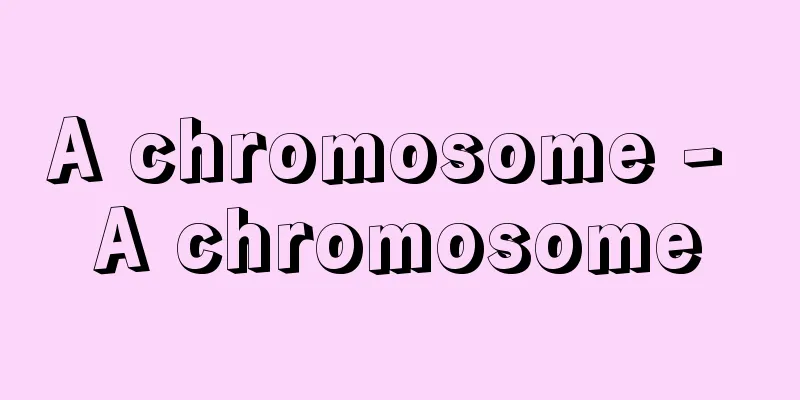Kintsuba - Kintsuba

|
A type of baked confectionery. It is an abbreviation of Kintsuba-yaki, but its predecessor was Gintsuba in Kyoto. In the Yoshu-fushi published in 1686 (Jokyo 3), it is described as baked mochi, made by rolling non-glutinous rice flour into a flat round shape, wrapping it in red bean paste and baking it. It was called Gintsuba because of its shape that resembles the tsuba of a sword. It was first sold around Kiyomizu-zaka in Kyoto during the Tenna era (1681-84). The thin skin and generous amount of bean paste were popular with the common people, but some people were indignant at the false sign, saying, "It's only called Yakimochi in name, it's mostly just red bean paste." The method of making Gintsuba spread to Edo after the Kyoho era (1716-36), where Gintsuba changed its name to Kintsuba. It was a sweet made by kneading wheat flour tightly, rolling it into small balls, spreading it thinly, wrapping it in crushed bean paste, placing it on a hot plate and lightly baking the surface, and was often sold at food stalls. The Bunka and Bunsei eras (1804-30) were the heyday of Kintsuba, and among the prostitutes of Yoshiwara, there was a song that said, "Even if my contract is extended, what I want to eat is the Kintsuba sweet potato on the bank." A Kintsuba shop with a signboard of a Okame mask appeared on Asakusa Umamichi, and gained a reputation for its Kintsuba named "Mimeyori." People value their hearts more than their looks, and the contents of sweets also reflect the spirit of the competition. Other famous kintsuba from Eitaro at the old fish market in Nihonbashi and, in the Meiji period, Fugetsudo in Minami-Tenmacho were very popular, and in the early Showa period, Kiraku in Isezakicho, Yokohama, made a name for itself with its large kintsuba. In Tokyo, kintsuba with Ueno Hirokoji's "Henohenomoheji" baked into them were also popular. At Fukagawa Fudo, a yatai kintsuba stand still appears on the 28th of each month. As for local specialties, Chaya Shingetsudo at Jorennotaki Falls in the Amagi mountains in Izu produces the deliciously flavorful inaka kintsuba. This is not a baked confectionery but a steamed kintsuba. [Fumio Sawa] Source: Shogakukan Encyclopedia Nipponica About Encyclopedia Nipponica Information | Legend |
|
焼き菓子の一種。金鍔焼きの略であるが、前身は京都の銀鍔だった。1686年(貞享3)刊行の『雍州府志(ようしゅうふし)』には焼餅(もち)とあり、粳米(うるちまい)粉を平たく円く延ばし、小豆餡(あずきあん)を包んで焼いたもので、刀の鍔に似る形状から銀鍔といわれた。京の清水(きよみず)坂あたりで、天和(てんな)年間(1681~84)ごろ売り出されたのが始まり。皮が薄く餡の多い量感が庶民に受けたが、「焼餅とは名ばかり、ほとんど小豆餡ばかりではないか」と看板の偽りを憤慨する人もいた。 銀鍔の仕法が江戸に流れたのは享保(きょうほう)(1716~36)以降であるが、江戸では銀鍔が金鍔と名を変えた。小麦粉を固くこねて小さな粒に丸め、薄く広げてつぶし餡をくるみ、鉄板にのせて軽く表面を焼くだけの菓子で、屋台売りが多かった。文化・文政(ぶんかぶんせい)年間(1804~30)は金鍔の全盛時代で、吉原の遊女たちの間に、「年季増しても食べたいものは土手の金鍔さつまいも」とうたわれた。浅草馬道におかめの面を看板にした金鍔屋が現れ、「みめより」と名づけた金鍔で評判をとった。人はみめより心、菓子も中身で勝負の心意気としたのである。このほか日本橋旧魚河岸(うおがし)の栄太楼(えいたろう)や、明治期になると南伝馬町凮月堂(ふうげつどう)の金鍔が大いに受け、昭和初期には横浜市伊勢佐木(いせざき)町にある亀楽(きらく)が大金鍔で名をあげた。また東京では、上野広小路の「へのへのもへじ」を焼き込んだ金鍔が評判であった。深川不動では毎月28日に現在でも屋台金鍔が出る。また地方名物では、伊豆天城(あまぎ)山中の浄蓮(じょうれん)ノ滝で、茶屋新月堂が風味のよい田舎(いなか)金鍔を手がけている。これは焼き菓子でなく蒸し金鍔である。 [沢 史生] 出典 小学館 日本大百科全書(ニッポニカ)日本大百科全書(ニッポニカ)について 情報 | 凡例 |
Recommend
Shinoda
Also written as Shinda or Shida. A work of Kōwakam...
Nouin - Nouin
A poet of the mid-Heian period. His real name was...
arachnoid granulation
…These cisterns are called subarachnoid cisterns,...
Symmetry - Sosho
In biology, this refers to the division of an ani...
Blut-und-Boden-Dichtung
…German literature under the Nazi regime was divi...
Alexandrian senna (English spelling) Alexandriansenna
…A shrub of the legume family native to Egypt and...
Wasabinoki - Wasabi tree
A small deciduous tree of the Moringaceae family ...
Teutonic
...The origin of the name Germanic is unknown, bu...
Halocynthia roretzi - Halocynthia roretzi
An archochordate (illustration) of the family Halo...
Nemesis - Nemesisu (English spelling)
A goddess in Greek mythology. She is interpreted ...
Agoraphobia - Hirobakyofu (English spelling) agoraphobia
It is an insurmountable anxiety and fear of going ...
Peacock, A.
...It was thought that by stimulating individual ...
Kao, Charles
Born: November 4, 1933 in Shanghai [Died] Septembe...
RI - Reevaluation
Rehabilitation International is an international N...
Pelargonium
A general term for the genus Pelargonium (Japanes...









